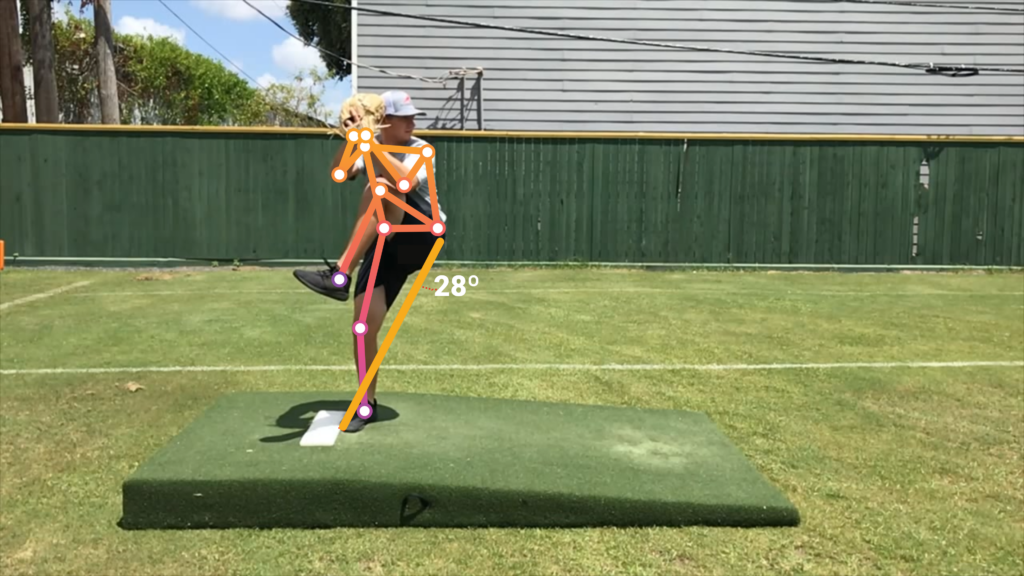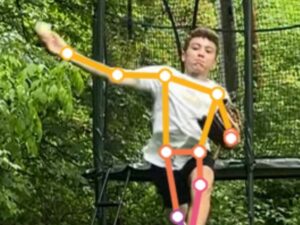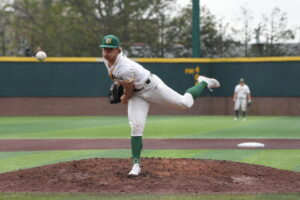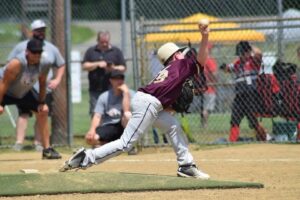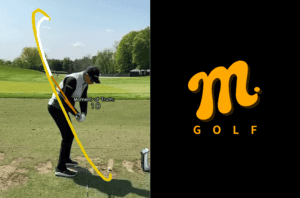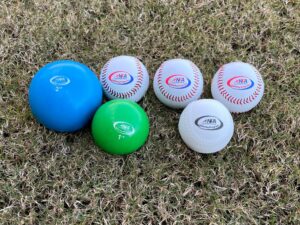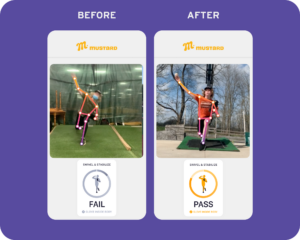By Tom House, PhD, with Lindsay Berra
Find Your Set Position
Set position determines all of the balance and posture positions that are necessary to initiate the delivery. If you don’t have balance and posture before you start to move toward home plate, your body has to adjust so it can go forward. That’s your subconscious brain, trying to define and feel balance and posture before it initiates any movement. The best way to ensure your body doesn’t have to make those adjustments to get going straight towards home plate is to set up balance and posture in the stretch position, before you move at all. Your head should be directly over your belly button and you should be leaning slightly forward. The back foot should be against the rubber, with the big toe lined up with the arch of your front foot. I do ask that the feet be parallel, so if the back foot is angled on the rubber, the front foot should duplicate that angle. The feet should be spread armpit-width with the knees slightly bent; if your base is too wide, you won’t be able to lift your leg without cantilevering to shift your center of gravity backward and your head will go back before it goes forward. From that position, all you have to do is turn your head toward home plate.
How do you find your ideal set position?
Take the position your body wants to be in to accelerate to the plate, found at max leg lift, then put your lead foot down.
That’s your set position.
Head drops less, posture won’t change & your booty goes to the plate faster. pic.twitter.com/2StScqUfRK
— Tom House (@tomhouse) June 4, 2021
Remember the Law of Inertia
The Law of Inertia says that an object at rest wants to stay at rest. When you lift and thrust to move toward home plate, you have to overcome the law of inertia from your set position. You want to do it in the most efficient way possible, and that is to get your booty going as fast as you can toward home plate. You can also think of it as “leading with the body.” Your greatest mass is located in your lower half and you want to use that mass as effectively and as early as possible. Beginning with the back toe lined up with the front arch sets you up to get your booty moving.
Energy Angle
The energy angle is measured when the body can do nothing but go forward, and you want to achieve that with your first movement. You don’t want to “find a balance point,” “stay over the rubber,” or “stop at the top.” And you certainly don’t want to lift your leg and rotate backwards, because then you have to stop, reverse all that momentum and come forward again to the point from which you should have started. All that extra is wasted, inefficient movement. The faster you get to your energy angle, which is measured at max leg lift from your leading hip to your back ankle and should be 25 degrees or more, the faster you get to where your whole body can only move down the center line from the middle of the rubber to the middle of home plate. Get your rear end moving toward home plate the moment you lift your leg, or think about leading with the left pants pocket if you’re a righty, or the right pants pocket if you’re a lefty. You should feel like you are sticking your butt out toward home plate as you move down the mound. That ensures you have good timing, get into foot strike in one second or less, and helps the energy angle take care of itself.
When pitchers create a strong energy angle they can maintain or increase their velocity. But how do our coaches teach the process? Pitching Velocity & Energy Angle | National Pitching Tom House Sports LLC https://t.co/8hTmh8ZqZh pic.twitter.com/FQEyIARCOX
— National Pitching Association | Tom House Sports (@NPA_Pitching) December 17, 2020
Lift & Thrust
As soon as you start to lift your leg, you have to get your booty going. You want all of your momentum going toward home plate as soon as possible, and if you do that, the thinking is done and your body will carry out the rest. Lift and thrust. As soon as you lift, thrust your butt toward home plate. The easiest way to do that is to preset the lower half so when you kick into leg lift, you are already in that angle. Back when I first started doing data capture, I told Nolan Ryan that because he was getting older, it might not be worth it for him to lift his leg as high. And he said, “Tom, I throw harder when I lift my leg higher, so go put that in your darned computer.” And he was right. However, if you are going to have a really high leg kick, it has to be done in the same time frame as someone who doesn’t lift their leg as high. The higher you can lift your leg while maintaining balance and posture, the further you will stride, the more energy you will deliver to home plate and the harder you will throw easy. But if you over-rotate your shoulders or lean your head toward second base as you lift your leg, or if your head and shoulders get ahead of your front hip as you travel down the mound, all of those advantages go away.
It’s a Leap, Not a Jump
Your movement down the pitcher’s mound is a leap, which goes out for distance, not a jump, that goes up for height. If you were jumping, the back knee would straighten out, and that doesn’t happen in the pitching delivery. Whatever the angle of the back knee is when the body starts moving forward is the angle it will be throughout the delivery. Pitchers get their leap from plantar flexion of the back ankle, or going tippy-toe, not from contraction of the quad. The quad and the knee are only stabilizing during the delivery. While plantar flexion will happen with no specific teach, we teach it because all of the elite pitchers do it. If a kid aged 13 and under can figure this out with his or her nervous system before they get to the strength window of trainability, they’ll have plantar flexion like a big leaguer before they get out of high school. Plantar flexion will be the greatest right before the front foot hits. If you look at Nolan again, just before his front foot landed on the ground, he got an extra 12 or 13 inches in his stride from plantar flexion moving him out, not up.
If you’d like more great content from Mustard, and you’d like to evaluate and improve your own pitching mechanics, download the Mustard pitching app today.

